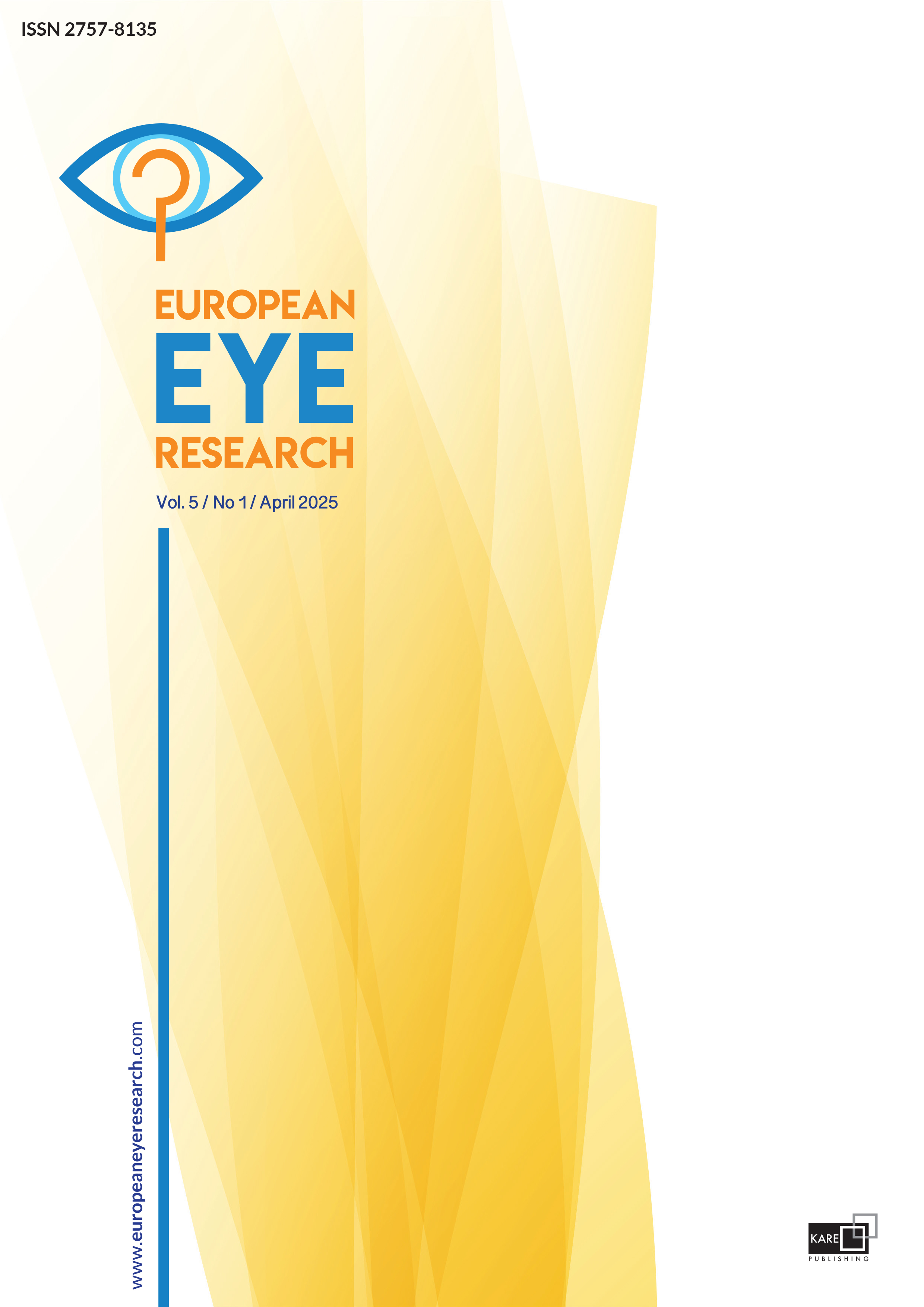

Effects of intravitreal injection on the ocular surface and corneal endothelium in patients with neovascular age-related macular degeneration
Levent Dogan, Omer Ozer, Zeki BaysalDepartment of Ophthalmology, Nigde Omer Halisdemir University, Nigde, TürkiyePURPOSE: The study aimed to evaluate the effects of repeated intravitreal injection (IVI) of anti-vascular endothelial growth factors on the ocular surface and corneal endothelium in patients with neovascular age-related macular degeneration (nAMD).
METHODS: This cross-sectional study included 261 nAMD patients who had undergone at least three IVIs in both eyes (Group 1), 115 patients who had recently been diagnosed with nAMD (Group 2), and 92 healthy age- and sex-matched participants (Group 3). The dry eye evaluation was performed using tear film break-up time (TBUT), the Schirmer 1 test, the Oxford scale, and the Ocular Surface Disease Index (OSDI). All groups underwent specular microscopy examination. In Group 1, the eyes received a higher number of injections were included in the study 28 days after the last IVI treatment.
RESULTS: The mean age of the participants in Groups 1, 2, and 3 was 74.8±8.4, 73.6±9.1, and 75.1±7.4 years, respectively (p>0.05). In Group 1, OSDI scores were significantly higher, and TBUT and Schirmer 1 values were significantly lower than the other groups (p<0.05). Between groups 2 and 3, a significant difference was observed only in OSDI scores among dry eye parameters, with Group 2 having significantly higher OSDI scores (p=0.019). According to the Oxford scale, only Group 1 had significantly higher scores than Group 3 (p=0.021). The measured endothelial cell density, coefficient of variation, and percentage of hexagonal cells values were not significantly different among the groups (p>0.05).
CONCLUSION: Repeated IVIs may contribute to ocular surface inflammation through multiple mechanisms, including exposure to povidone-iodine and preservatives present in topical eye drops. The cumulative exposure associated with frequent injections could exacerbate this inflammatory response, potentially leading to ocular surface damage. The burden of IVIs or the presence of nAMD does not appear to affect corneal endothelial function.
Manuscript Language: English



